5 competitor insights about the athleisure footwear industry
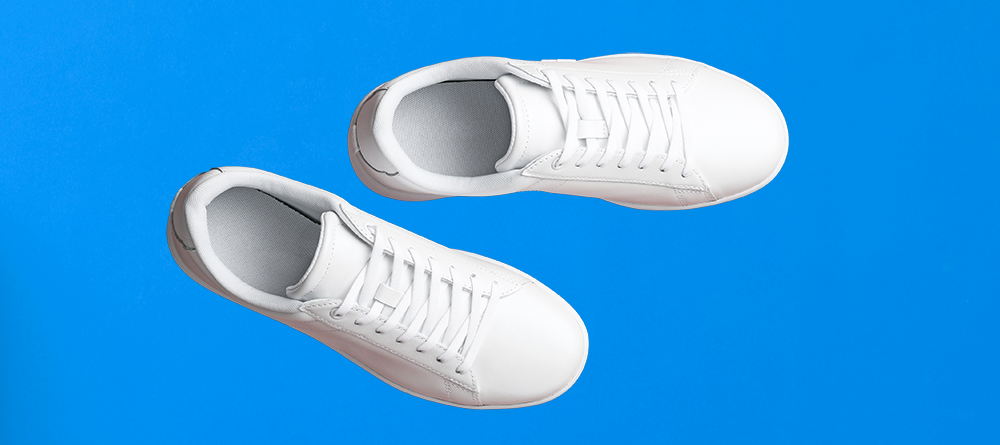
All around the world, the sneaker industry is booming. In 2017, the athletic footwear market was valued at $64.30 billion and is expected to reach $95.14 billion by 2025, which is almost a 50% increase in market value in just eight years.
So what’s the reason for such impressive growth? Athleisure has taken the fashion industry by storm and the athleisure footwear category has experienced more growth in the last couple of years than any other type of shoe, in the entire footwear industry.
In fact, according to the NPD, athleisure footwear is expected to drive U.S. footwear sales growth through 2021, surpassing fashion footwear as the top-selling footwear category on the market .
In the midst of such impressive growth, we got curious. How do popular athleisure brands like Nike, Adidas, Reebok, Converse, and Vans set themselves apart from to win their share of the multibillion-dollar market? To unearth competitor insights, we used Relative Insight to analyze customer reviews of athleisure shoes from these five brands to discover the differences in what consumers are saying.
Vans fans are basically collectors
Vans customers use the word “favorite” to describe their sneakers far more than other customers of other brands. Even more interestingly, they don’t use the word “favorite” to describe their preference of Vans over other brands, rather, they use it to describe their preference of one pair of Vans they own, over another pair they own.
The data suggests that Vans customers are both satisfied and loyal to the brand with a tendency to own multiple pairs at a time. Selling multiple pairs to the same customer is definitely one effective strategy to make money in the highly competitive athleisure footwear market.
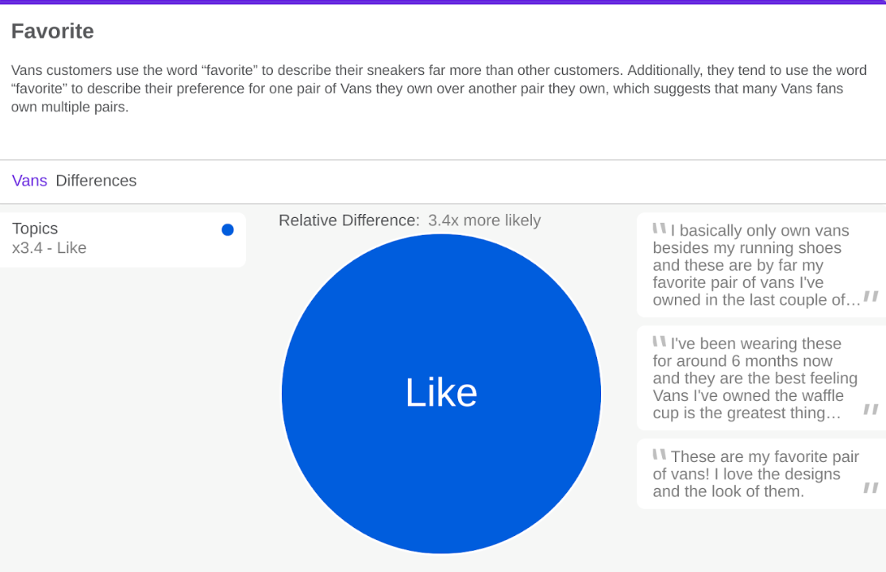
Reebok fans are having trouble finding their shoes
Reebok fans are also loyal but in a different way. They don’t necessarily mention owning multiple pairs of sneakers, but they do mention searching far and wide for specific styles they fell in love with way-back-when. In fact, Reebok fans are 3.2x more likely to discuss “searching for their shoes” and “finally finding them” than any other customers.
While the data certainly offers insight into the die-hard dedication of Reebok fans, we’re more curious about why it’s so hard for Reebok fans to get their hands on their favorite kicks. If Reebok could help their loyal fans find old or vintage styles they’re looking for, they may be able to significantly increase their sales?
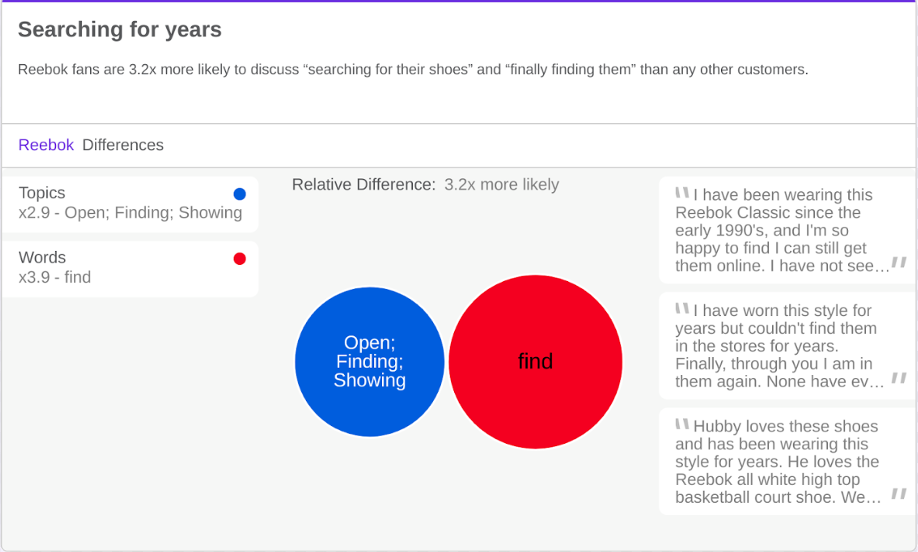
Nike fans are hard to please
Nike is the clear market leader for the athletic footwear industry. But, despite their unparalleled popularity, we found that Nike customers are not the most satisfied. In fact, Nike customers are 5.2x more likely to express disappointment than any other customers… Ouch.
At first, the statistics seem shocking. How does a brand do so well when they seem to repeatedly disappoint their customers? But there might be a possible explanation: While most brands we compared are appealing to a specific niche, Nike is faced with the challenge of appealing to the masses.
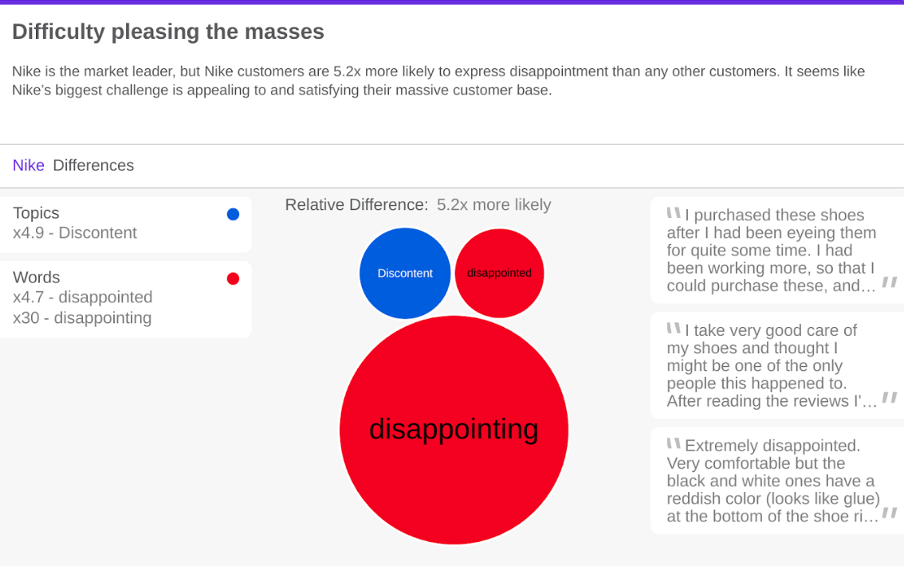
Converse has been listening to their fans
Converse customers love their Chuck Taylors, and the brand have been really smart about sticking to their niche and pleasing their loyal fans. They recently came out with a new model called Chuck 70s, featuring higher quality materials and a sturdier heal, and Converse fans seem to love the improvements. In fact, these customers are 2.3x more likely to express satisfaction with improvements than any other customers of any other brand.
It seems like Converse’s strategy is to listen to their fans and give them what they want, amd based on insights from our platform, we can see that they’re doing a great job.
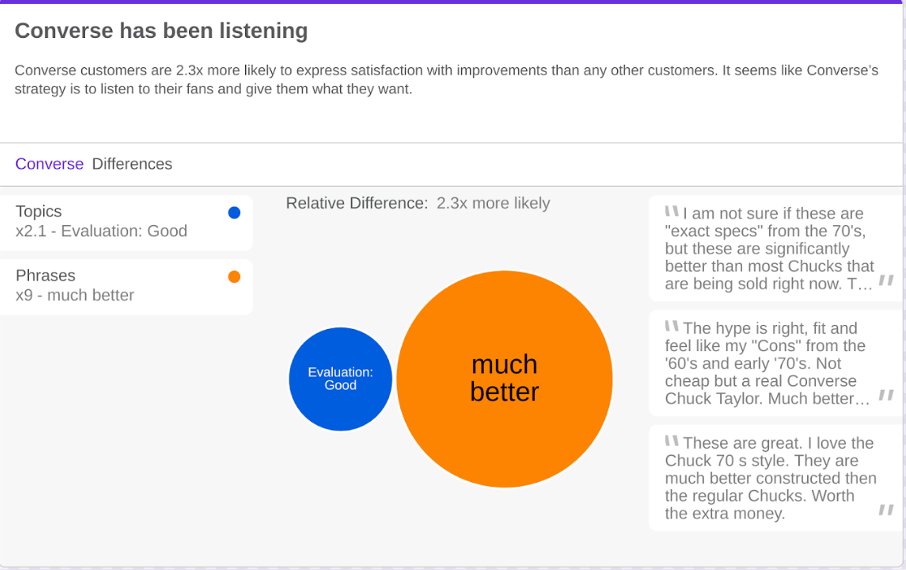
Adidas fans are fashion-forward
It’s no surprise that Adidas fans love the “classic style” of Adidas sneaker, so much so that they are 10.5x more likely to compliment the brand’s “classic style” than any other customers.
But did you know that Adidas fans are also quite fashion-forward? It’s true. Adidas fans are 5.8x more likely to discuss their shoes as a “fashion statement”. It seems like Adidas might be appealing to two major niche markets at the same time! Maybe that’s how Adidas has secured the number two spot right behind Nike all these years.
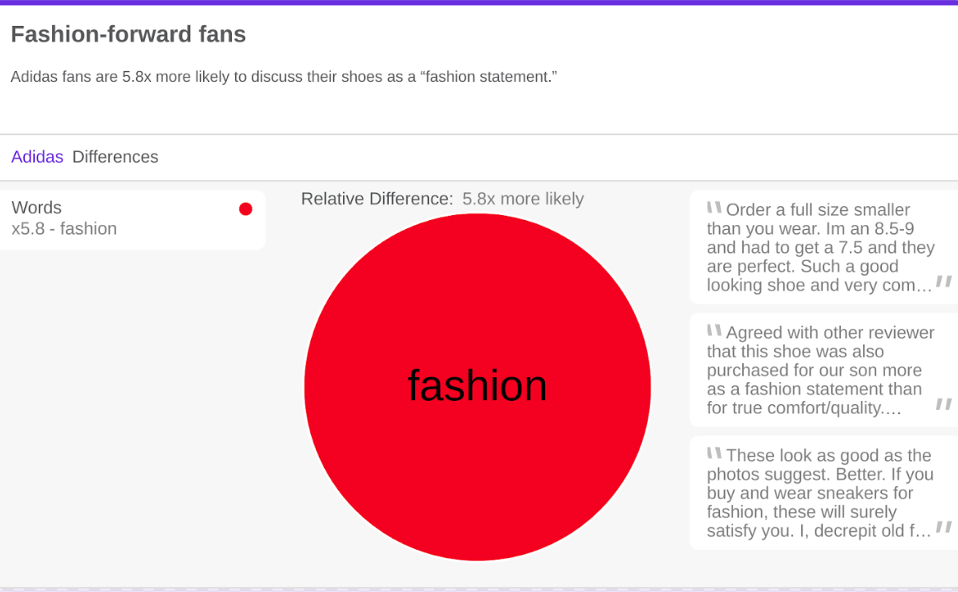
Some insight about the insights
Hundreds of companies are using Relative Insight to improve the way they approach competitor analysis. Using comparative text analytics, we uncovered some important competitor insights about the marketing and sales strategies of these five major players in the sneaker market.
